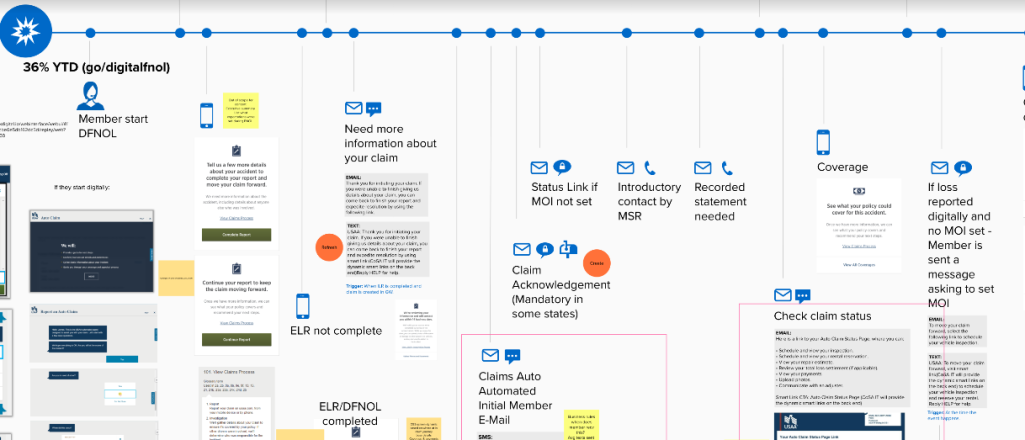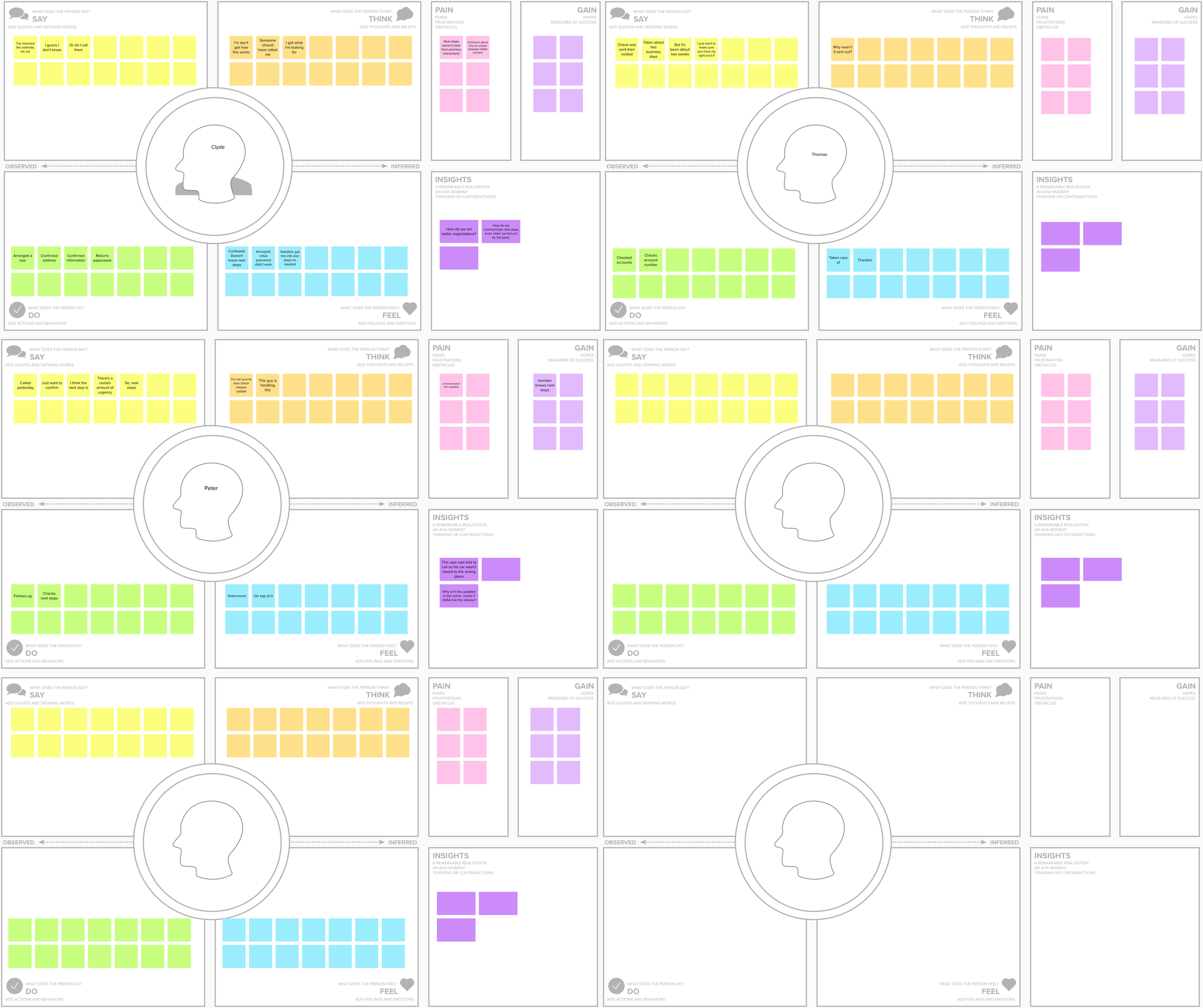THE GOAL
Boost satisfaction for members who service their auto claims digitally and reduce calls per auto claim. We measure this with MSAT, member satisfaction score, and call volume reduction.
THE STRATEGY
Collaborate with cross-functional partners on solutions. I gathered business requirements, developed process flows, and created content tailored to the auto claims team’s needs..
OUTCOMES
Member satisfaction. New content across channels helped maintain claims within the digital path, resulting in a 25% reduction in status call volume and a 42% increase in support page traffic over six months.
In my time at USAA, I worked across channels on all insurance claims content. My first priority was to fill content gaps for our support pages. While we knew where some of the gaps in our content were, we wanted to scope in on status content that could be created or tweaked to help members self-serve answers within the first three days after a claim was filed. In insurance, status is anything that happens after a claim is filed. Our data showed that over 60% of our calls were status calls within the first three days of a claim.
These gaps had caused an 18% increase in call volume that year. While this workstream produced many content assets, I’m going to drill down on the auto claims process steps page and how that has become bedrock content for members.
Auto content gap workstream
End-to-end map
To start the process, our subject matter experts gave us a scenario, a simple two-car crash with no injuries. The design lead and I conducted a content audit of what we present to our members throughout a claim.
We gathered all communications a member would get from the start of a claim to the end. While still focusing on our use case, we plotted the communications on a timeline and compared that to what the touchpoints and communications would be if a member filed a claim on the phone. How do the Member Service Representatives (MSR) communicate next steps? Is it consistent with what the digital content is saying?
Empathy mapping
We listened to calls to identify common pain points that members call about in the first three days. I organized several of the calls into empathy maps.
We used those common themes and the end-to-end map to identify gaps in our content.
We noted when members’ questions could be addressed through content for a support page or FAQ. Several of these notes helped us add content for EVA, our chatbot.
Solutions for each gap
Our content team met weekly to share ideas and I created a content strategy brief outlining solutions for each gap. The focus was creating content across channels that:
Set member expectations.
Was consistent across web, mobile, chat, emails and SMS.
Was distributed to MSR staff responsible for delivering consistent expectations.
The content strategy brief recommended eight new pages and six videos to fill the content gaps that drive the most calls. While this project only tackled a small portion of that to target our use case, the auto claims team now has a roadmap and knows exactly what to target in future workstreams.
The auto claims process
Based on our discovery work, we prioritized content for the auto-claims process. We had member sentiment and call data that backed our plan.
I worked with subject matter experts to write out the basic steps every claim moves through, and we created this page and the video embedded in it. There was already process step content for members, but it was a very short reference card you had to log in to view. This page gives our members a reference throughout the process and links to the information they might want in each step without needing to be in their claim profile and having to dig for it.
We had three table reads with various stakeholders: design, legal, compliance, product, and a11y to refine the content. Although we prioritized other assets initially, this page is reviewed annually with suggestions from stakeholders.
I made an important content decision for this page to prioritize status in the CTA. Generally, our pages prioritize filing a claim, but since the intent of this page is to guide a member during their claim, I aligned those to the intent.
Additionally, I addressed member concerns over supplemental claims, addressing them both in the FAQ and in the ‘Repairs’ step. Almost all auto claims have a supplemental claim, and those were driving calls, especially for members who chose an out-of-network shop.
The video, which mirrors the written content, is easily distributable in the initial claims email and is a part of our comprehensive Claims video hub.




